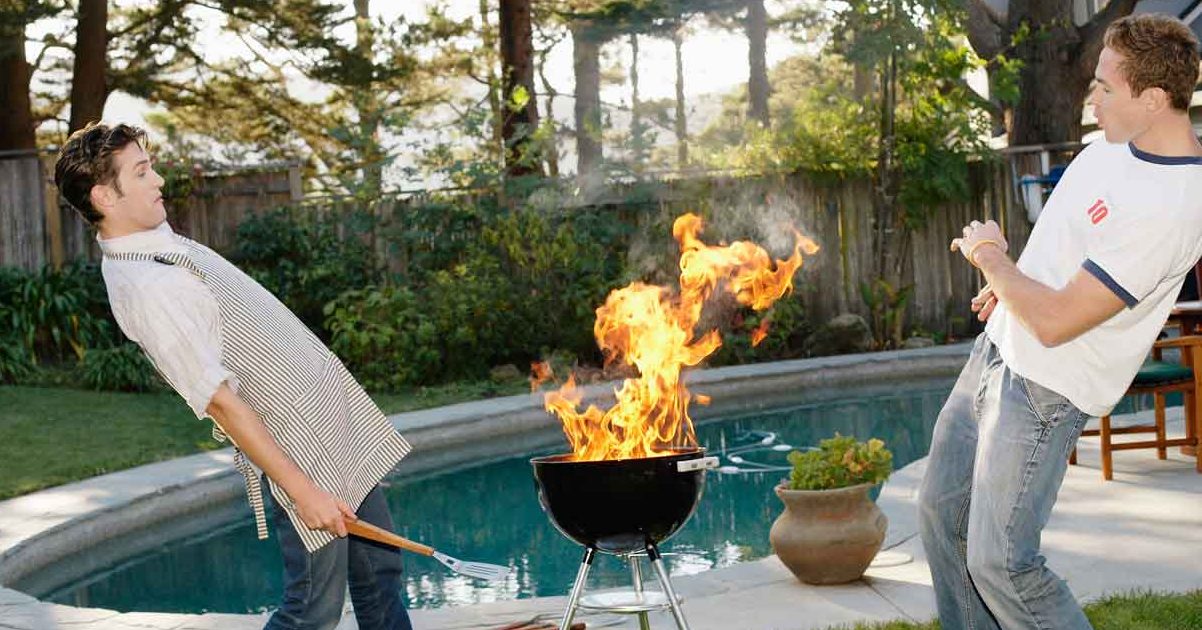Barbecue Safety Tips

Fire and burn hazards send thousands to the hospital each year. Don’t let them ruin your cookout. Here’s what you should know.
Before you fire up the grill and throw on a few burgers and dogs for a summer backyard barbecue, make sure your outdoor cooking equipment doesn’t endanger your home and health. Each year, grills are responsible for about 8,900 home fires and nearly 20,000 injuries.
“Grilling season is a great time of year for friends and families to have cookouts and tailgate, but before starting the season, be sure your grill is working properly and review safety tips,” said Lorraine Carli, vice president of Outreach and Advocacy for the National Fire Protection Association. “It is good practice to check for damage before using it for the first time each year, and to clean and check the entire grill regularly.”
YOU MIGHT ALSO LIKE: Healthy Barbecue Tips
Here are a few tips to ensure your grill is safe and ready to light:
Move your grill to a safe location
It goes without saying that you should grill only outside. Your grill not only poses a fire hazard but also can also cause carbon monoxide poisoning in an enclosed space. Position the grill at least 10 feet away from your home, and a safe distance from combustible materials like deck railings, roofs, siding, leaves, and low-hanging branches. Also check that the grill is on stable footing so it won’t tip over.
Do a pre-season check
Your grill doesn’t have to be brand new, but it should be in good condition. At the start of the season, do a thorough check of the grill and hose. Propane gas hose leaks are the leading cause of gas grill fires. A rotten egg smell is one sign of a leak, but you can also test for holes, pouring a little soap and water mix on the hose. If you see bubbles, it’s leaking. Turn off the gas and call in a professional to fix the hose.
Read the manual
Once you’ve confirmed that your grill is safe and ready to go, learn how to use it properly. Get familiar with the user’s manual and follow the manufacturer’s instructions for lighting, cooking, and gas storage.
Use gas grills properly
Keep your gas canister outside. Never store it inside the home or garage. Open the lid and scrub grease and food buildup off the grates before you turn on the grill to prevent a grease fire.
Be careful with coals
Charcoal lighter fluid is the only type of starter fluid that’s safe to use with a coal grill. When you’re ready to cook, pour the fluid on the coals first, and then light them. Pouring charcoal fluid on hot coals could cause an explosion. Once you’re done grilling, let the coals cool completely. Douse them with water before throwing them into a metal trashcan with a lid.
Dress for grilling success
When grilling, don’t wear loose-fitting clothes with hanging pieces of fabric, like a tie or apron strings, that could catch on fire. Wear oven mitts and use long-handled utensils to prevent burns.
Be alert
Stay close to the grill while you cook and pay attention. Have a fire extinguisher close by in case the flames get out of control.
Create a grill-safe zone
Keep kids and pets at least 3 feet away from the grill. Don’t let them run around you while you cook.
Keep food safe
Fire isn’t the only grilling hazard. Undercooked food can make you and your guests sick and ruin your cookout. Use a food thermometer to ensure everything that comes off the grill is at the right temperature before it hits your plate.
Steaks, chops, and seafood should reach a temperature of 145 degrees Fahrenheit. Burgers need to be cooked to 160 degrees, and chicken must reach 165 degrees before it’s safe to eat.
Wash your hands with soap and water before you cook and after you handle raw meat. Keep raw and cooked foods on separate plates to avoid cross-contamination.
Updated:
May 23, 2023
Reviewed By:
Janet O’Dell, RN